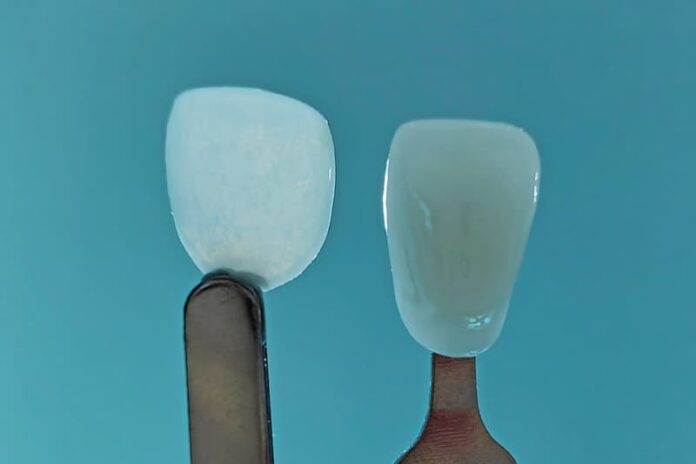New 3D printed veneers would be 3x thinner, durable and require less prep time for dentists
Boston Micro Fabrication (BMF), a provider of manufacturing solutions for ultra-high precision applications, launches UltraThineer™, a 3D printed veneer that requires the use of the company’s projection micro stereolithography (PµSL) at the manufacturing level.
BMF claims that these new products are “the world’s thinnest cosmetic dental veneers.” They would be three-times thinner than traditional veneers and require significantly less preparation for dental professionals.
The company explains that veneers are currently manufactured to a thickness of approximately 0.5 mm or more and require extreme prep work of existing teeth. This is a highly invasive, non-reversable, and uncomfortable procedure for the patient. For aesthetic restoration, ultra-thin veneers allow little to no tooth preparation, preserving as much enamel as possible and are just 100 µm thick. With a choice of ultra-thin zirconia veneers, dentists can align, reshape, or brighten teeth with a simple, painless, and minimally invasive procedure.
“The ability to print ceramics at minimal thickness will be revolutionary. Our current processes for producing minimal prep veneers can be labor-intensive when compared to milled, full coverage crowns in zirconia. Conservative reduction of the patient’s enamel should be practiced whenever possible. I’m looking forward to the start of this new technology, allowing intricate, ultra-thin veneers to be printed. BMF’s advancements and innovation will continue to push the boundaries of dentistry and inspire innovation worldwide,” stated Jessica Love from Capture Dental Arts, a leading US provider of cosmetic dental service.
BMF is committed to developing applications where its unique, micro-scale, highly precise printing technology can significantly reduce production time and cost as well as enable innovation. UltraThineer veneers, which have been developed in collaboration with Peking University, feature advanced material, a production workflow, and the finishing process to deliver thinner, more comfortable, and less invasive veneers. Additive manufacturing, or 3D printing, is already proven across multiple dental applications including orthodontic aligners, mouthguards, drill guides, and dentures due to need for on-demand, personalized, and custom solutions.
“The ultra-thin and strong 3D printed zirconia veneer technology can quickly and painlessly strengthen and protect the surface of teeth, prevent cold acid stimulation and wear, and significantly improve appearance. More importantly, compared to conventional ceramic veneer technology, the entire process of tooth reduction is eliminated,” said Professor Sun Yuchun, Peking University School of Stomatology.
UltraThineer veneers are expected to be available in U.S. in the spring of 2024, following review by the U.S. Food and Drug Administration (FDA).
Remember, you can post free of charge job opportunities in the AM Industry on 3D ADEPT Media or look for a job via our job board. Make sure to follow us on our social networks and subscribe to our weekly newsletter : Facebook, Twitter, LinkedIn & Instagram ! If you want to be featured in the next issue of our digital magazine or if you hear a story that needs to be heard, make sure to send it to contact@3dadept.com






